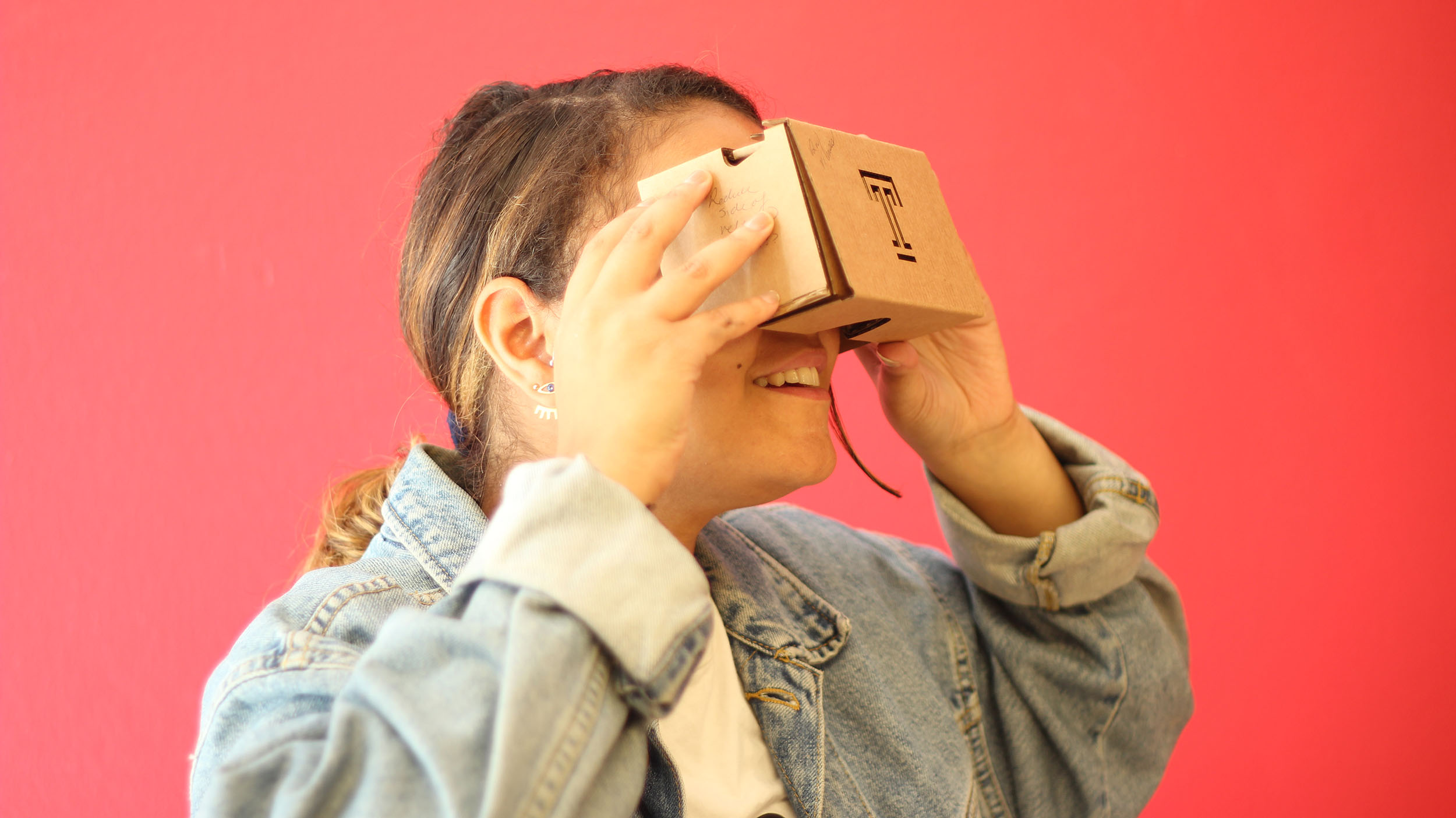Students from Laura Zaylea’s Emergent Media Production class teamed up with Matthew Lombard’s Psychological Processing of Media class and created projects in 360 degree video, which were shown at an exhibition in Paley Library on Dec. 14.
Zaylea was assigned to teach the class in 2012, at which point the curriculum mainly focused on HTML coding. However, emergent media is, by definition, always evolving, so today’s curriculum and coursework is vastly different. She says the department gave her a lot of room to get creative with curriculum and explore new media. Over the years, Zaylea and her students have created content for iBooks, locative media and webisodes. This year turned their attention to 360 degree spherical video.
360 degree video uses cameras with multiple lenses to create a complete visual that can be turned into a virtual reality work when combined with other software and tools. With the help of a special headset, viewers can watch the films and feel like they are in the middle of the action, creating a uniquely immersive experience.
“Production classes need so much—cameras, reflectors, tripods, etc.,” said Zaylea. After using cameras supplied by Klein College for one year, she applied for the 3,500 grant funded by Innovative Teaching with makerspace technology and the Digital Scholarship Center of Temple Libraries. The first year of the grant was spring 2017, and it was set up to fund classroom technology.
Zaylea guided her class of 10 undergraduates and seven graduate students through the completion of these projects from creative brainstorming to the final presentation. She said the students all pitched their individual ideas for projects, then they whittled them down to a few top ideas, and broke off into teams to bring the ideas to life.
“The students formed their own groups after the discussions - people connected based off what they were passionate about,” Zaylea said. “When you know and trust the people you are working with you create stronger work.”
“I told them they needed to create a story that matters. Something that’s related to a social justice cause or has a deeper meaning they felt connected to,” she later added. “I didn’t want any trivial stories.”
Lombard’s class, Psychological Processing of Media, designs studies to understand how people learn from and connect to the media they consume. The Emergent Media class used the recommendations and insights from Lombard’s class to refine their work.
The completed projects covered a range of topics. “Coming Out to Mom” seats the viewer at a dinner table, where a boy sits with his mom and debates coming out to her.
“The camera position works really well, placed as a third seat at the table.,” Zaylea said. “You can look all around the room, but you’ll see empty space. From the setup of the shot you can tell where your attention is supposed to be focused.”
“Beyond the Color Line” takes the viewer on a walk around Temple’s Bell Tower, where people are holding up blank signs. Civil rights slogans appear on the cards as speeches by Martin Luther King and other civil rights leaders play in the background.
The videos make use of the depth provided by 360 degree video to create a very immersive experience. Viewers can walk and look around, and they will feel like they are actually in the shot.
“This class has been an experiment,” Zaylea said. “I’m interested in narrative storytelling, applying old-school film principles to new media and learning what benefits each media provides.”

